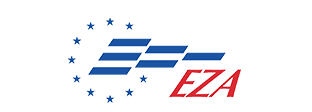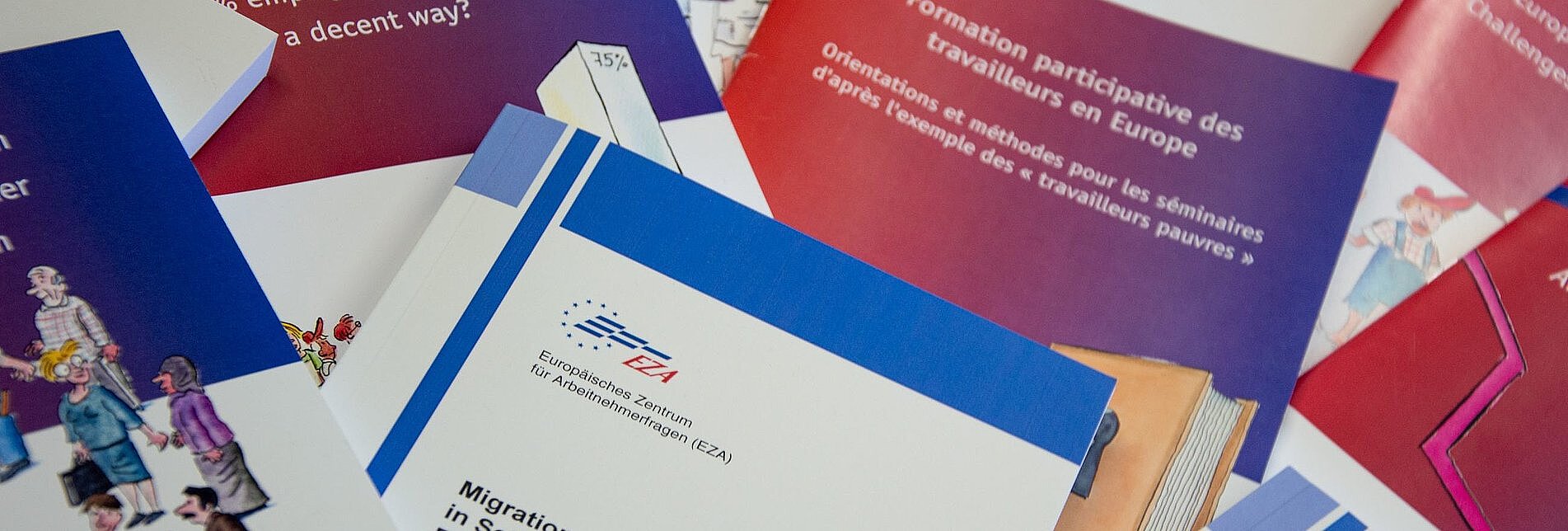From 28. June to 1st July 2018 took place in Košice, Slovakia, a seminar about “Safety and health at work. The role of trade unions”, organized by NKOS (Nezávislé krestanské odbory Slovenska), with the support of EZA and of the European Union. 45 representatives of workers’ organisations from Slovakia, Czech Republic, Poland, Serbia, Germany, Lithuania, Portugal and Romania and Cyprus participated in the seminar.
The aims of the project were to answer these questions:
- What does safety and health at work mean for the employee?
- What does safety and health at work mean for the employer?
- What impact do OSH (Occupational safety and health) rules and regulations have in the workplace?
- Is it possible to reach the goal of zero occupational casualties?
- How to curb the number of occupational diseases?
- What does it mean for workers and for trade unions?
- What new OSH training methods need to be developed?
Whatwasthemostimportantaspectoftheseminar?
Employees are a company's greatest asset and employer has to assist in achieving business objectives, as well as meeting legal and moral obligations in providing and maintaining a safe and healthy workplace. It might seem obvious, but management of health and safety in the workplace is very important because along with protecting employees, it also increases productivity when employees are healthy and happy. OSH in companies is important for legal, economic, and moral reasons. The main purpose of the OSH rules and regulations is to protect workers from health and safety hazards on the job. It sets out duties for all workplace parties and rights for workers. It establishes procedures for dealing with workplace hazards and provides for enforcement of the law where compliance has not been achieved voluntarily. The participants of the seminar were able to discuss the presented topics as well as the work health and safety issues troubling their home countries. They also exchanged the useful advice on how to solve important OSH matters and prevent work accidents resulting in unnecessary deaths and occupational diseases.
Whywastheseminarimportantjustnow?
Prevention of occupational fatalities is very important nowadays and depends on the understanding that worker safety is not only the responsibility of the worker, but is the primary responsibility of the employer. It is imperative that an employer addresses all the potential risk factors at the workplace and educates all employees in safe work practices and risk awareness. Every industry comes with its own risks which according to the laws implemented, the employers need to address and restrict. Worker unions have played an important role in getting the laws in place and forcing the employers to implement it. Workers or employees were not treated well in the past. They were many times thought of as slaves and were working in the most dangerous conditions. Employers were neither responsible nor were they taking measures to ensure employees' health and safety. OHS needs to be a top priority for the organisation to implement workplace health and safety measures for their employees. If the workplace is not capable of keeping the employees fit and healthy then there will be issues and leaves hence, costing a lot to the company. The other cost that company will bear is a loss of skilled labour, reduced productivity, loss of business reputation, or in the worst-case scenario – loss of lives. In the countries of the EU, industrial accidents cause on average 5,720 fatalities every year. Millions more are injured and maimed or suffer from an occupational illness. There were 3,876 fatal accidents at work in the EU-28 during 2015, an increase of 102 deaths compared with the year before. It seems that number of workplace fatalities keeps increasing, that’s why the topic of the seminar is so important now. The representatives of trade unions have to exercise their powers and put as much pressure as possible on the employers to push these numbers down significantly.
Thefollowingtopicfieldswerediscussed?
Friday29.6.2018
The participants of the seminar were welcomed by Mr. Milan Tóth, vice-president of NKOS Slovakia who invited all of them for a study visit to U.S. Steel Košice - the largest integrated steel producer in Slovakia as well as in Central Europe. The participants had a unique opportunity to visit, in attendance of company’s labour inspectors, some manufacturing facilities of U.S. Steel Košice where they witnessed a presentation about the detection of OSH hazards and active elimination of risks in such a high risk industries as metallurgy. The study visit took couple of hours and ended with lunch for the participants which was served in the company’s canteen.
1.Discussionpanel
Subject:OSHLegislationinSlovakia–PracticalExamplesofitsImplementationinUSSK–U.S.SteelKošice.
Speaker:Ing. Martin Harvan, representative of OSH department in USSK – U.S.Steel Košice
Moderator: Zuzana Jánová, member of NKOS
The presentation of Ing.MartinHarvanwasvery detailed. He spoke about the Occupational Safety and Health Strategy (OSH) in the Slovak Republic for the period 2016 – 2020 and the Programme of its Implementation. It defines basic goals and priorities and establishes principal tasks in the area of occupational safety and health protection in the Slovak Republic for the period until 2020. The OSH Strategy was prepared in relation to the Community strategy 2014-2020. The main goals of the OSH Strategy include a support for long-term sustainable decent work conditions, the maintenance of the low number of occupational accidents achieved in 2012, especially fatal occupational accidents and accidents with lifelong consequences, as well as the elimination of occupational health risks and hazards, the improvement of prevention and strengthening the labour culture. Afterwards he talked about the implementation of OSH rules and regulations into everyday life at U. S. Steel Košice. The company remains focused on its primary core value – the safety and health of its employees and contractors working at the facility every day. The company firmly believes that zero injuries could be achievable and that remains its goal. The incorporation of the Carnegie Way into the safety process will enhance the efforts in identifying, prioritizing, and eliminating risk while engaging the entire workforce. Ongoing implementation of 5S (Japanese for: sort, set in order, shine, standardize, sustain) housekeeping principles will assist in creating and maintaining an organized, clean, and high performance workplace across all facilities of U. S. Steel Košice.
Saturday30.6.2018
2. Discussion panel
Subject:StrategicframeworkCzechrepublic2030anditsimplementationinthefieldofworkingconditionsandhealth.
Speaker:Lidmila Němcová, vicepresident of ESU, member of KAP (CZ)
Subject:OSH–goodexamplesfromthepractice
Speaker:Mara Erdelj, board member of WOW and SS BOFOS (Serbia)
Subject:“HealthandSafetyatWork:Healthyworkplaces”withintheEZAeducationalprogram2018
Speaker:Jozef Mozolewski, vice-president of EZA (Poland)
Moderator: Agáta Kubinová, member of NKOS
LidmilaNěmcová spoke about the Czech Agenda 2030 which is a strategic framework document that sets out goals and targets to be reached by 2030 in Czech Republic. The so-called "strategy of strategies” consists of detailed measures and policies for the sustainable development of the country. It covers six national priority areas: people and society, economic model, resilient ecosystems, municipalities, global development and good governance. She concentrated on its implementation in the field of working conditions and health. Greater degree of individualization can lead to weakening of union organizing and to weakening of collective negotiation position. The state has to therefore efficiently and comprehensively protect all its employees, not just the working position.
Mara Erdelj spoke about OSH rules and regulations in Serbia. The largest responsibility is on the employer, because they need to provide a healthy working environment. Regarding health and safety at work, the Serbian law provides that there is a greater number of representatives of employees in comparison to those of the employers. A characteristic of Serbian system is that all those who are engaged in activities related to health and safety at work need to pass the expert examination. Exposure to stress is one of the biggest risks in the workplace (as indicated by 53% of workers), 27% of workers suffer from stress, depression or anxiety caused or aggravated by work. She mentioned the good examples how to combat stress from the practical life in SS BOFOS.
JozefMozolewski informed about the National Strategic Programme in Poland entitled “Safety and Protection of Employee in the Workplace“. Poland has a system of social dialogue across all levels (national, sectoral and enterpreneural) and in different policy areas, including economic, social and OSH policy. He also presented the part “Healthy workplaces” within the framework of the EZA educational program 2018.
3.DiscussionPanel
Subject:OccupationalHealthandSafetySituationintheWesternandEasternEUcountries.
Speakers: Pavel Matoušek, general secretary of KOK CZ, Jelena Jureniene, Solidarumas Lithunania, Mara Erdelj, board member of WOW and SS BOFOS (Serbia), Silviu Ispas, IFES (Romania)
Moderator: Zuzana Jánová, member of NKOS
Every speaker presented a short report regarding OSH situation in their home countries.
4.Discussionpanel
Subject:OccupationalHealthandSafetySituationintheWesternandEasternEUcountries.
Speakers: Malgorzata Zlotkowska, Solidarnosc (Poland), María Reina Martin, FIDESTRA Portugal, Joachim Herudek, CDA (Germany), Stelios Christodoulou, DEOK (Cyprus)
Moderator: Zuzana Jánová, member of NKOS
Every speaker presented a short report regarding OSH situation in their home countries.
Practicalviewofproject
Friday29.6.2018
StudyvisitinU.S.SteelKošice
Moderator:Štefan Link, U.S. Steel Košice
U.S. Steel Košice is an integrated steelmaking company with more than 50 years of tradition and annual raw steel production capability of 4.5 million metric tons. The company employs almost 12,000 people. The technology of steel production has a significant impact on the environment. Production processes are therefore constantly monitored for environmental effects, protective technologies are utilized to their fullest extent, and technological discipline and information technology are employed to reduce the environmental burden caused by steel-making processes. U.S. Steel Košice offers specialised OSH trainings for all its employees and introduces strategies which could reduce the rate of accidents causing longer than three days of work absence in its high-risk facilities. The OSH measures are further aimed at improving the health and safety of workers through practical training, preventing of fatal accidents and concrete preventive measures implemented by the company. Visitors were informed that in the company like US. Steel Košice OSH matters must go first because of possible life-threatening injuries caused by moving machinery, equipment and other falling objects, blast furnaces‘ accidents, as well as exposure to various toxic fumes and chemicals. And that is the reason the workers do not really have to make any demands to employers over occupational health and employment at the time of consultation and information because the company will demand it from every employee in the first place. The management of U. S. Steel Košice decided that all employees performing work at the Operations and/or Maintenance for U. S. Steel Košice or its subsidiaries, are obliged to pass the Cardinal Rules – Life Threatening Programs training and testing. Aim of this training is to obtain theoretical and practical knowledge related to Cardinal rules and other Life Threatening Programs and to perform the safety rules in practice as well. Content of Cardinal Rules training:
1. Energy control Program
2. Elevated Work and Fall Prevention Program
3. Mobile Equipment Program
4. Confined Space Program
5. Gas Hazard Management Program
6. Molten metal Employee Exposure Program
7. Crane Operation and Load Handling Program
The workers also have a help line available where they can report any concerns they have reagarding OSH matters, or any other problem they are facing at their workplaces.
Recommendations–ingeneral,but of course alsoconcerningengineering,electricalengineeringandmetallurgicalindustries
-
-
- The ongoing demographic change will require us to focus our understanding of occupational risks as well as any concrete measures to improve health and safety more closely on new target groups. One objective will be to maintain and preserve the general health of an ageing workforce for as long as possible. In the light of the ongoing demographic change, this will increasingly be in the enterprises’ own interests.
- Since rapidly growing numbers of people are suffering from stress and burnout, and since it is increasingly young people between the ages of 25 and 30 who are affected, the causes were identified included a more and more challenging business environment and increasingly unstable employment relationships.
- The participants were encouraged to exercise their powers as trade unions’ representatives so all the workplaces in their home countries have the strictest possible OSH rules and regulations so all the hard working mothers, fathers, sons or daughters can safely return to their families after every day at work.
-

